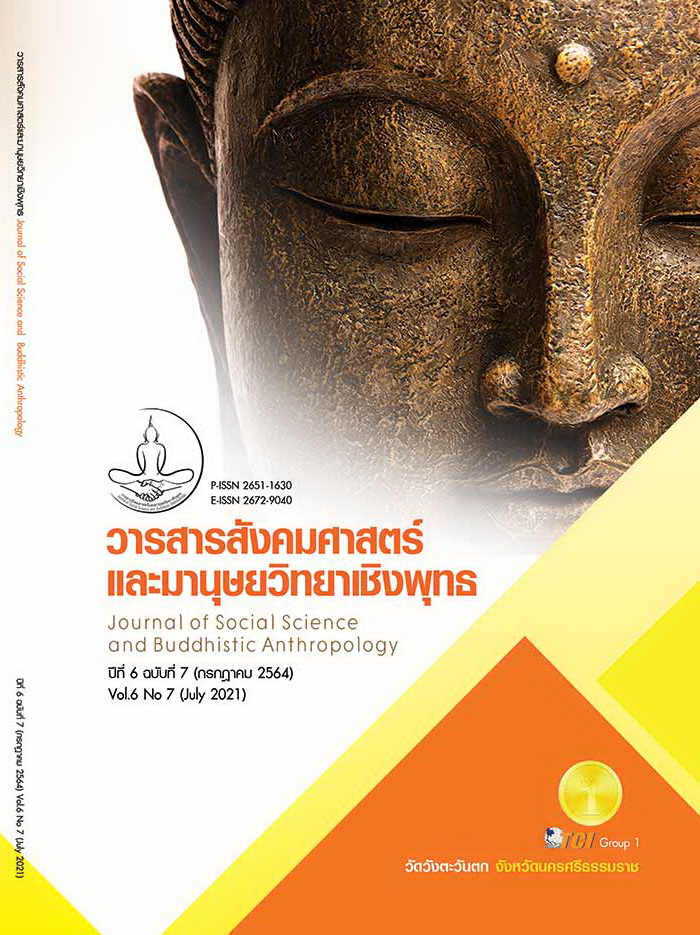TWITTER: SELF-PRESENTATION, VIRTUAL COMMUNITY, AND CONNECTION OF THE GROUP WITH DIVERSE SEXUAL TASTES ON THE TWITTER
Keywords:
Twitter, Virtual Community, Self-Presentation, Connection, The Group with Diverse Sexual TastesAbstract
The research paper aims to understand the communication of groups with diverse sexual testes via Twitter. And study the composition of the Twitter community that components support community of groups with diverse sexual testes demographic. Nowadays, we can meet groups with diverse sexual testes everywhere in the TV media, movies, social media, and on the expression of their own identity, the need to be perceived or negotiation of society. In this study, the researcher chose the concept of social networking, community, and new media online as a framework for analyzing the results. And use the access method through a Netnography approach via Twitter with 20 people with diverse sexual tastes. The criteria for the selection and elimination by the satisfaction of participants The study found that the elements that make Twitter are a channel for gathering groups of people with diverse tastes., comprising two reasons. 1) Twitter offers great freedom in expressing yourself through images or videos or the use of specific terms and symbols. And 2) Twitter algorithm. It is one of the great tools. Also, Twitter is a significant channel for groups with diverse sexual tastes due to the basic features of Twitter that open up the freedom of communication between people, be it images or video clips. Therefore, the researcher can conclude that Twitter is another channel for the group with diverse sexual tastes to create anonymous relationships and self-presentation with a feeling of security.
References
กำจร หลุยยะพงศ์. (2560). ปรัชญานิเทศศาสตร์และทฤษฎีการสื่อสาร. กรุงเทพมหานคร: สำนักพิมพ์มหาวิทยาลัยสุโขทัยธรรมาธิราช.
คุณA1. (29 พฤษภาคม 2563). ความสัมพันธ์ในทวิตเตอร์. (ว่าที่ร้อยตรีเบญจรงค์ ถิระผลิกะ, ผู้สัมภาษณ์)
คุณA17. (23 มิถุนายน 2563). ความสัมพันธ์ในทวิตเตอร์. (ว่าที่ร้อยตรีเบญจรงค์ ถิระผลิกะ, ผู้สัมภาษณ์)
คุณA8. (31 พฤษภาคม 2563). ความสัมพันธ์ในทวิตเตอร์. (ว่าที่ร้อยตรีเบญจรงค์ ถิระผลิกะ, ผู้สัมภาษณ์)
จตุพร บุญ-หลง. (2548). ชีวิตติดเบอร์ : ตัวตนและเพศวิถีของเกย์ "ควิง" ในเซานา M. ใน วิทยานิพนธ์ศิลปศาสตรมหาบัณฑิต สาขาวิชาสตรีศึกษา. มหาวิทยาลัยธรรมศาสตร์.
จตุรวิทย์ ทองเมือง. (2551). ชีวิตของคนที่มีความหลากหลายทางเพศ ในชุมชนเสมือนจริง. ใน วิทยานิพนธ์มานุษยวิทยามหาบัณฑิต สาขาวิชามานุษยวิทยา. จุฬาลงกรณ์มหาวิทยาลัย.
ตะวัน อ้วนสมบูรณ์ และ ธรรมกิตติ์ ธรรมโม. (2560). การใช้สื่อสังคมออนไลน์ในการเสริมสร้างความสัมพันธ์ของสมาชิกกับสโมสรฟุตบอลที่ได้รับความนิยม. พิฆเนศวร์สาร, 13(2), 65-79.
ปภัสนันท์ ชมจันทึก. (2562). พฤติกรรมการเปิดรับ ทัศนคติ และกระบวนการตัดสินใจท่องเที่ยวตามแฮชแท็กท่องเที่ยวบนทวิตเตอร. กรุงเทพมหานคร: แม็คเอ็ดดูเคชั่น.
พิมพ์วิภา มีงามดี และคณะ. (2020). การนำเสนอภาพลักษณ์ของ “เกย์” และ “เลสเบี้ยน” ในทวิตเตอร์. วารสารวิชาการคณะมนุษยศาสตร์และสังคมศาสตร์ มหาวิทยาลัยราชภัฏนครราชสีมา, 1(1), 49-61.
ภัทรวรรณ สมประสงค์ และ มฑุปายาส ทองมาก. (2558). การใช้สื่อสังคมออนไลน์ในการสร้างความสัมพันธ์กับลูกค้าของวิสาหกิจขนาดกลางและขนาดย่อม. วารสารระบบสารสนเทศด้านธุรกิจ, 1(1), 86-101.
ภัทรเวช ฟุ้งเฟื่อง. (2557). การศึกษารูปแบบการบริโภคสื่อประเภทแอพพลิเคชั่นของกลุ่มผู้รับสารชายรักชาย: กรณีศึกษาแอพพลิเคชั่น "Grindr". ใน วิทยานิพนธ์วารสารศาสตรมหาบัณฑิต สาขาวิชาการบริหารสื่อสารมวลชน. มหาวิทยาลัยธรรมศาสตร์.
วัชรินทร์ ภิญโญศาสตร์. (2550). การสื่อสารเพื่อสร้างสัมพันธภาพและการสร้างตัวตน ในเกมออนไลน์ของวัยรุ่นไทย. ใน วิทยานิพนธ์นิเทศศาสตรมหาบัณฑิต สาขาวิชานิเทศศาสตร์. จุฬาลงกรณ์มหาวิทยาลัย.
วีระพล วงษ์ประเสริฐ และคณะ. (2020). ทวิตเตอร์ (Twitter) กับทัศนคติทางการเมืองแบบประชาธิปไตยของเยาวชนไทยที่สยามสแควร์. Rajapark Journal (Humanities and Social Sciences), 14(32), 141-154.
สุธาวัฒน์ ดงทอง. (2559). นัดยิ้ม: สัมพันธภาพทางเพศสัมพันธ์แบบชั่วคราวของเกย์โดยใช้ทวิตเตอร์. ใน รายงานสืบเนื่องงานประชุมด้านสังคมศาสตร์และมานุษยวิทยา. มหาวิทยาลัยธรรมศาสตร์.
อภินันท์ ธรรมเสนา. (2018). สื่อใหม่กับกลุ่มชาติพันธุ์: การต่อรองทางการเมืองและวัฒนธรรมของกลุ่มชาติพันธุ์ในสื่อออนไลน์. วารสารศาสตร์, 9(2), 24.
Beaulieu, A. (2004). Mediating ethnography: objectivity and the making of ethnographies of the internet. Social epistemology, 18(2-3), 139-163.
Castells, M. (2004). The network society A cross-cultural perspective. New York: Edward Elgar.
Delanty, G. (2003). Virtual community: belonging as communication. London–Thousand Oaks–New Delhi: Community.
Dijk van Jan, A. (2006). The network society. Social aspects of new media. London–Thousand Oaks–New Delhi: SAGE Publications.
Goffman, E. (1968). Asylums: Essays on the social situation of mental patients and other inmates. New York: Aldine Transaction.
Harper, G. W. et al. (2016). The internet’s multiple roles in facilitating the sexual orientation identity development of gay and bisexual male adolescents. American journal of men's health, 10(5), 359-376.
Hootsuite, N. K. (2020). How the Twitter Algorithm Works in 2020 and How to Make it Work for You. Retrieved May 20, 2021, from https://blog.hootsuite.com/
Hymes, D. (2003). Ethnography, linguistics, narrative inequality: Toward an understanding of voice. London: Taylor & Francis.
ITOPPLUS Digital Marketing Services. (2020). รู้อัลกอริทึม = ไขความลับโลกออนไลน์. เรียกใช้เมื่อ 21 สิงหาคม 2563 จาก https://www.facebook.com/itopplus /photos/pcb.3213817548705055/3213803172039826
Jackson, K. M., & Trochim, W. M. (2002). Concept mapping as an alternative approach for the analysis of open-ended survey responses. Organizational Research Methods, 5(4), 307-336.
Kozinets, R. V. (2002). The field behind the screen: Using netnography for marketing research in online communities. Journal of marketing research, 39(1), 61-72.
__________ (2010). Netnography: Doing ethnographic research online. London: Sage publications.
Lin, K. S., & Van der Putten, M. (2012). Identities in motion: cyberspace and Myanmar men having sex with men. Research on Humanities and Social Sciences, 2(4), 36-48.
Liu, I. L.et al. (2010). Understanding Twitter Usage: What Drive People Continue to Tweet. Pacis, 92(1), 928-939.
Rainmaker, R. (2020). อัปเดตอัลกอริทึม Twitter 2020 อะไรที่คนทวีตต้องรู้. เรียกใช้เมื่อ 7 พฤษภาคม 2563 จาก https://www.rainmaker.in.th/algorithm-twitter-2020/
Riccio, J. R. (2013). All The Web's a Stage: The Dramaturgy of Young Adult Social Media Use. London: SAGE Publications.
Roy, S. K. (2009). Internet uses and gratifications: A survey in the Indian context. Computers in Human Behavior, 25(4), 878-886.
Sánchez, F. J. et al. (2010). Masculine gender role conflict and negative feelings about being gay. Professional Psychology: Research and Practice, 41(2), 104.
Tidey, J. (2017). Social network data: Twitter vs FB vs Google vs everyone else. London: Towards Data Science.
Twitter Privacy Policy. (2020). Twitter Privacy Policy. Retrieved November 25, 2021, from https://twitter.com/en/privacy








